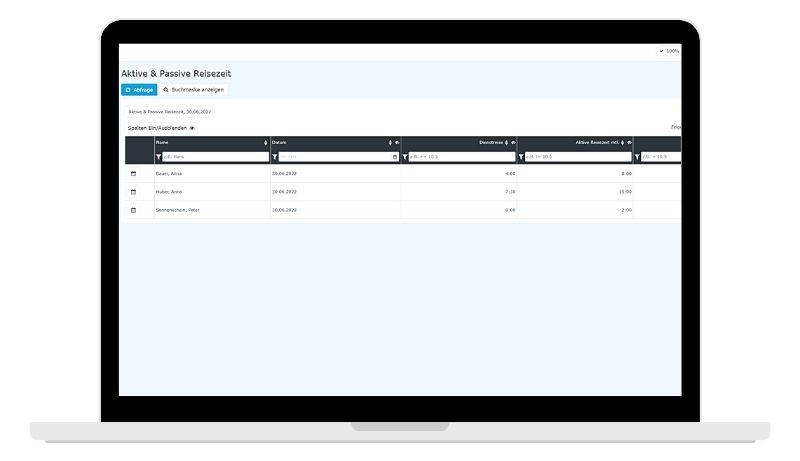active / passive travel time Austria

New contributions:
Experience the future of corporate management: let your employees manage their own data with Employee Self Service!
Why is trust-based working time so controversial? In this blog, we will tell you what trust-based working hours really mean, what opportunities and risks they entail and which legal regulations employees and employers must observe.
Trust-based working hours: flexibility or control and transparency through time tracking?
Why is trust-based working time so controversial? In this blog, we will tell you what trust-based working hours really mean, what opportunities and risks they entail and which legal regulations employees and employers must observe.
Travel time is generally working time and occurs when the employee temporarily leaves his place of work to work at other locations. However, there is a distinction here between more active and passive travel time. We explain this difference in this blog post.
Active travel time
"Active travel times" within the meaning of the law are No travel times but normal working hours and chargeable. This means that active work can also be performed during the business trip, such as driving a vehicle or preparing for a meeting while traveling on public transport.
Passive travel time
"Passive travel times" are times when employees leave their place of work to work at other locations, but do not perform any work during the journey, but instead read a book, for example. For example: traveling by public transport or riding as a passenger.
Tip!
Collective agreements very often contain the corresponding regulation for the payment of passive travel times. A lower rate of pay or even no pay is usually stipulated for this. If there is no such agreement or collective agreement, travel time must always be paid in full. You can find more information on this here.
Important!
Travel time - i.e. time spent traveling from home to the place of work agreed in the employment contract and back - does not constitute travel time.
Advantages for companies why a distinction between active & passive travel time makes sense
- Passive travel time is generally paid at a lower hourly rate (depending on the collective agreement - see above).
- Passive travel time does not count as working time and is not taken into account when determining the maximum working time. As a result, the maximum daily working time may be exceeded. The same example applies to business trips that start on a Sunday or public holiday. For example: Business trip starts on a Sunday.
Special features in the personnel cloud
- A special feature that Personalwolke makes possible is the addition of passive travel time to the target working time. If, for example, the target working time is not reached through normal working time, the daily target is supplemented with the passive travel time.
- Travel times can be booked quickly and easily via smartphone. The current booking status is immediately visible to everyone in the attendance tableau.
- Clear evaluations and reports can be created and forwarded with just a few mouse clicks.
Our tip for HR experts
With the Personalwolke reporting tool, you can easily and clearly evaluate active and passive travel time and, if necessary, transfer it to payroll accounting.
This saves you valuable time and automatically reduces manual tasks.

Are you interested in this topic and would like more information?
Arrange a free consultation now and we will get back to you shortly.